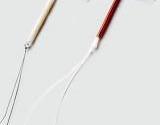When looking at the Mirena vs Paragard there is, only one difference between the two IUDs one has hormones that are slowly secreted through out the monthly cycle and the other does not. Both the Mirena and Paragard are ninety-nine percent effective in preventing pregnancy.
Mirena vs Paragard - Mirena
The Mirena is an IUD (intrauterine device) that releases tiny amounts of the hormone levonorgestrel directly into the uterus. The Mirena is used as a form of birth control and to help regulate heavy periods. The Mirena is a soft plastic T-shaped device that is inserted in the top of the uterus the upper T shaped portion of the IUD helps block the egg from beginning released and then fertilized by the sperm. The Mirena also thins the lining of the uterus making it very difficult for a fertilized egg to attach to the uterus. The IUD also thickens the cervical wall to help prevent the sperm from entering the uterus. In cases of women who are younger than 35 in the Mirena vs Paragard decision, most doctors would recommend the hormonal IUD Mirena.
Mirena vs Paragard - Paragard
The Paragard is also an IUD (intrauterine device) and it works the same way as the Mirena. The only difference is it does not contain any hormones. In cases of women who are 35 or older and or smokers in the Mirena vs Paragard decision, most doctors would recommend the non-hormonal IUD Mirena. Both IUDs are inserted in the doctor’s office in less than 15 minutes. The woman must check the string to make sure it is still there (to be certain the IUD did not fall out.) As soon either of the IUDs is removed, the woman can begin trying to conceive.
Related Articles
Side Effects of Copper T


